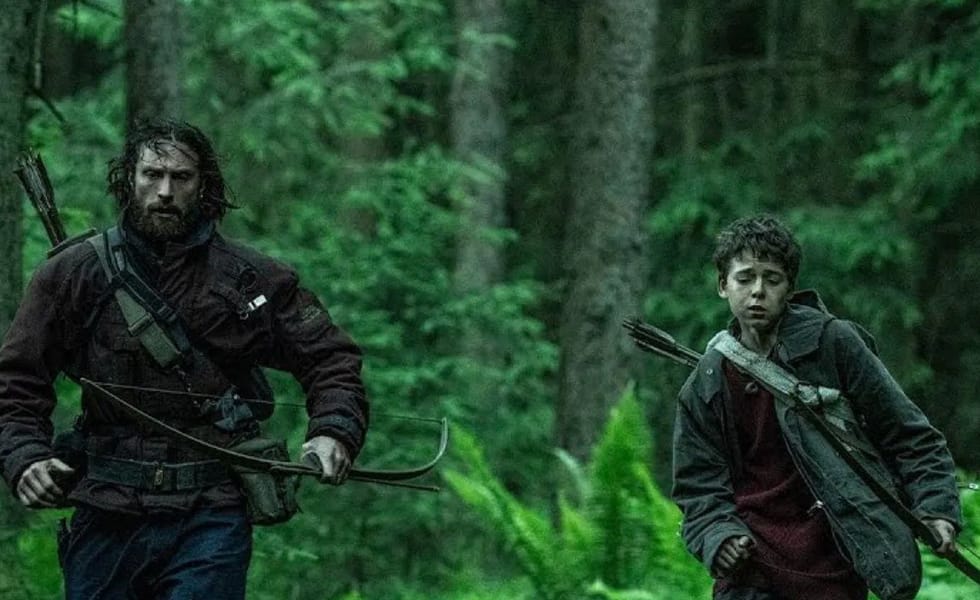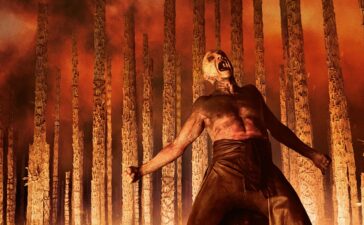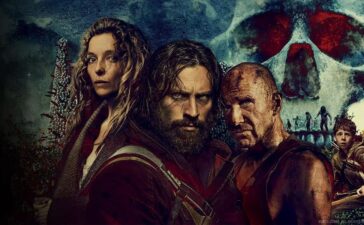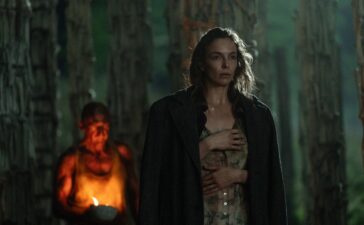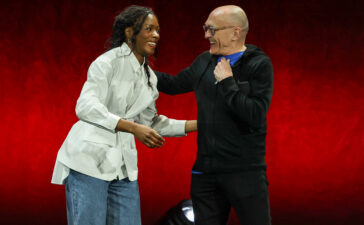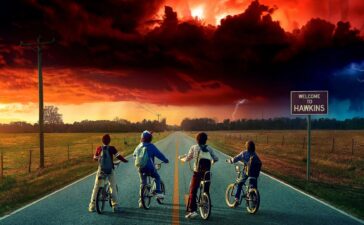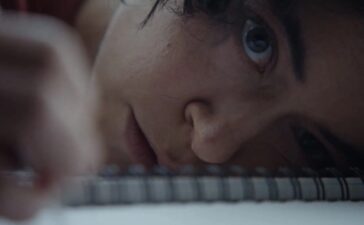Danny Boyle and Alex Garland return to their rage-ravaged world for another look at the matter of Britain.
There were plenty of theories flying around about 28 Years Later and what shape the long-awaited second sequel to 2002’s 28 Days Later might take. I doubt “gritty Iron Age fairy tale” was too near the top of anyone’s list of possibilities, but that’s what we got. But I mean “fairy tale” in the old school sense, which trends closer to folk horror in places. They were darker and bloodier back then, but the best children’s stories always are.
And I’d say 28 Years Later is a children’s story, but a pretty unflinching one. Kes was an influence, and you can see that in the performance of Alfie Williams as 12-year-old Spike, a sensitive young kid forced to deal with death, grief, and responsibility at a tender age. The fairy tale elements come into play when Spike sets out on a quest. Taking his ailing mother, Isla (Jodie Comer) with him, he sets out from their isolated village and into the wilderness to seek a cure for her illness. Somewhere out there is rumoured to be a wise man, Dr. Ian Kelson (Ralph Fiennes), whose knowledge of the old ways might prevail over her imminent death. It’s an archetypal coming of age story.
Of course, this all takes place in a Britain overrun by people infected with a horrific “rage virus” and these not-zombies have led to the whole country being quarantined (Europe, we find out, seems to be doing fine enough). Spike’s village – actually Lindisfarne, an island no stranger to ravening hordes – is a hold out, with technology almost reduced to medieval levels. In an extended early sequence we get the gist when we follow Spike and his dad, Jamie (Aaron Taylor-Johnson) on the kid’s first foraging expedition to the mainland, dodging Infected and occasionally taking them out with a bow and arrows.
But what’s interesting is that, apart from the obligatory post-apocalyptic scavenger-chic drop in technology, 28 Years Later shows us a complete change in the way of viewing the world. We’re dropped into a story where the characters understand the world through a kind of magical thinking and behave accordingly. Skills and traditions are passed down orally, with folklore inevitably creeping in around the edges. So when Spike sets off on his mission like the dutiful son in a Brothers Grimm joint, it makes beautiful, mythic, sense. And the horrors of the setting only heighten the heroism.
For all the shaky cam action and chase sequences, and the incredibly impressive fact that the whole thing was shot on iPhones, director Boyle and cinematographer Anthony Dod Mantle imbue the proceedings with a a magical grandeur at times. Lingering shots of moss-encrusted buildings looming like Roman ruins in the forest evoke your more Pagan stripe of British fantasy – Robin of Sherwood, perhaps, or even Excalibur. Fiennes former scientist, a man of reason seemingly gone mad from isolation, might as well be a druid fresh from the sacred grove with a fistful of mistletoe. If anything, I’m reminded of the novels of Rosemary Sutcliff, whose books paint such evocative pictures of Iron Age Britain before getting into the importance of human sacrifice in social cohesion.
So, okay, I’ll allow that 28 Years Later perhaps isn’t a children’s film. It is a brilliantly bloody fairy tale, though, plugged into much older and stranger story patterns than usual. Whereas 28 Weeks Later (2008) followed the sequel rules competently but fairly unimaginatively, here we’re off into wild and uncharted territory, and the result is darkly enchanting.


